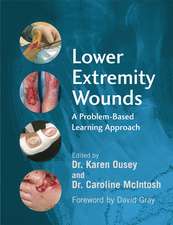Routledge Handbook of Well-Being
Editat de Kathleen Galvinen Limba Engleză Paperback – 30 apr 2021
Bringing together leading authors from around the world, Routledge Handbook of Well-Being reflects on:
- What it is that is experienced by humans that can be called well-being.
- What we know about how to understand it.
- How well-being is manifested in human endeavours through a wide range of disciplines, including the arts.
| Toate formatele și edițiile | Preț | Express |
|---|---|---|
| Paperback (1) | 366.09 lei 6-8 săpt. | |
| Taylor & Francis – 30 apr 2021 | 366.09 lei 6-8 săpt. | |
| Hardback (1) | 1336.15 lei 6-8 săpt. | |
| Taylor & Francis – 14 mai 2018 | 1336.15 lei 6-8 săpt. |
Preț: 366.09 lei
Preț vechi: 385.36 lei
-5% Nou
Puncte Express: 549
Preț estimativ în valută:
70.06€ • 72.87$ • 57.84£
70.06€ • 72.87$ • 57.84£
Carte tipărită la comandă
Livrare economică 15-29 aprilie
Preluare comenzi: 021 569.72.76
Specificații
ISBN-13: 9780367709648
ISBN-10: 0367709643
Pagini: 358
Ilustrații: 4 Tables, black and white; 10 Line drawings, black and white; 8 Halftones, black and white
Dimensiuni: 189 x 246 x 20 mm
Greutate: 0.67 kg
Ediția:1
Editura: Taylor & Francis
Colecția Routledge
Locul publicării:Oxford, United Kingdom
ISBN-10: 0367709643
Pagini: 358
Ilustrații: 4 Tables, black and white; 10 Line drawings, black and white; 8 Halftones, black and white
Dimensiuni: 189 x 246 x 20 mm
Greutate: 0.67 kg
Ediția:1
Editura: Taylor & Francis
Colecția Routledge
Locul publicării:Oxford, United Kingdom
Public țintă
Postgraduate and UndergraduateCuprins
Part I: The Human Experience of Wellbeing
What is wellbeing? Philosophical and theoretical foundations
Chapter 1 Paul Gilbert
Residence, Identity and Wellbeing
Chapter 2 Nigel Rapport
A Sense of Well-Being: The Anthropology of a First-Person Phenomenology
Chapter 3 Robert Mugerauer
Cities, Wellbeing, World- A Heideggarian Analysis
Chapter 4 Hirobumi Takenouchi
Dwelling in the world with others as mortal beings: ‘Well-being’ in post-disaster Japanese Society
Chapter 5 Jennifer Bullington
Well-being and Being-well: A Merleau-Pontian perspective on Psychosomatic Health
Chapter 6 Charlotte Knowles
Feminist Approaches to Well-being
Chapter 7 Samuel Clark
Philosophical Taxonomies of Well-being
Chapter 8 Les Todres and Kathleen T. Galvin
Dwelling- Mobility: An Existential Theory of Well-being
Chapter 9 Gideon Calder
Capabilities, Well-being and Universalism.
Part II: How are understandings of well-being developing? Disciplinary and professional perspectives
Chapter 10 David Seamon
Well-being and phenomenology: Lifeworld, Natural Attitude, Homeworld and Place
Chapter 11 Timothy Darvill, Vanessa Heaslip, Kerry Barras
Heritage and Well-being: Therapeutic places, past and present
Chapter 12 Minae Inahara
Disability and Ambiguities: Technological Support in a Disaster Context
Chapter 13 Stephen Burwood
The Existential situation of the patient: Well-being and Absence
Chapter 14 Karin Dahlberg, Albertine Ranheim, Helena Dahlberg
Ecological health and caring
Chapter 15 Chris Milton
A Jungian contribution to the notion of well-being
Chapter 16 Lennart Nordenfeldt
A new stance on Quality of Life
Chapter 17 Virgina Eatough
"What can’t be cured must be endured": Living with Parkinson’s disease.
Chapter 18 Eleonora P. Uphoff & Kate E. Pickett
The Distribution, Determinants and Root Causes of Inequalities in Well-being
Chapter 19 Stephen Wallace
Agencies of Well--being
Chapter 20 Ann Hemingway
Embodied Routes to Well-being: Horses and Young People
Chapter 21 Julie Jomeen & Colin Martin
Well-being and quality of life in maternal care context
Chapter 22 Steven Smith
Well-Being and Self-Interest: Personal Identity, Parfit, and Conflicting Attitudes to Time in Liberal Theory and Social Policy
Chapter 23 KMW (Bill) Fulford & Kathleen T. Galvin
Values-based Practice: at Home with our Values
Part III: How is Well-being manifest in human life? The Aesthetic of Well-being
Chapter 24 Dorthe Jorgensen
Creativity and Aesthetic Thinking: Towards an Aesthetics of Well-being
Chapter 25 Deborah Padfield
Collaborative drawings: blue-prints of conversation dynamics: The role of images and image-making processes to improve communication and the wellbeing of pain patients and clinicians in a series of art workshops at the National Portrait Gallery, London.
Chapter 26 Catherine Lamont-Robinson
Embodied connectivity through the Visual and Tactual arts.
Chapter 27 Monica Prendergast and Carl Leggo
Poetry and/ as Wellness
Chapter 28 Jennifer Schulz
Thirteen ways of looking at a clinic
Chapter 29 Denis Francesconi
Eudaimonic Well-being and Education
Chapter 30 Kathleen T. Galvin & Les Todres
Eighteen Kinds of well-being but there may be many more: A conceptual Framework that provides direction for Caring
What is wellbeing? Philosophical and theoretical foundations
Chapter 1 Paul Gilbert
Residence, Identity and Wellbeing
Chapter 2 Nigel Rapport
A Sense of Well-Being: The Anthropology of a First-Person Phenomenology
Chapter 3 Robert Mugerauer
Cities, Wellbeing, World- A Heideggarian Analysis
Chapter 4 Hirobumi Takenouchi
Dwelling in the world with others as mortal beings: ‘Well-being’ in post-disaster Japanese Society
Chapter 5 Jennifer Bullington
Well-being and Being-well: A Merleau-Pontian perspective on Psychosomatic Health
Chapter 6 Charlotte Knowles
Feminist Approaches to Well-being
Chapter 7 Samuel Clark
Philosophical Taxonomies of Well-being
Chapter 8 Les Todres and Kathleen T. Galvin
Dwelling- Mobility: An Existential Theory of Well-being
Chapter 9 Gideon Calder
Capabilities, Well-being and Universalism.
Part II: How are understandings of well-being developing? Disciplinary and professional perspectives
Chapter 10 David Seamon
Well-being and phenomenology: Lifeworld, Natural Attitude, Homeworld and Place
Chapter 11 Timothy Darvill, Vanessa Heaslip, Kerry Barras
Heritage and Well-being: Therapeutic places, past and present
Chapter 12 Minae Inahara
Disability and Ambiguities: Technological Support in a Disaster Context
Chapter 13 Stephen Burwood
The Existential situation of the patient: Well-being and Absence
Chapter 14 Karin Dahlberg, Albertine Ranheim, Helena Dahlberg
Ecological health and caring
Chapter 15 Chris Milton
A Jungian contribution to the notion of well-being
Chapter 16 Lennart Nordenfeldt
A new stance on Quality of Life
Chapter 17 Virgina Eatough
"What can’t be cured must be endured": Living with Parkinson’s disease.
Chapter 18 Eleonora P. Uphoff & Kate E. Pickett
The Distribution, Determinants and Root Causes of Inequalities in Well-being
Chapter 19 Stephen Wallace
Agencies of Well--being
Chapter 20 Ann Hemingway
Embodied Routes to Well-being: Horses and Young People
Chapter 21 Julie Jomeen & Colin Martin
Well-being and quality of life in maternal care context
Chapter 22 Steven Smith
Well-Being and Self-Interest: Personal Identity, Parfit, and Conflicting Attitudes to Time in Liberal Theory and Social Policy
Chapter 23 KMW (Bill) Fulford & Kathleen T. Galvin
Values-based Practice: at Home with our Values
Part III: How is Well-being manifest in human life? The Aesthetic of Well-being
Chapter 24 Dorthe Jorgensen
Creativity and Aesthetic Thinking: Towards an Aesthetics of Well-being
Chapter 25 Deborah Padfield
Collaborative drawings: blue-prints of conversation dynamics: The role of images and image-making processes to improve communication and the wellbeing of pain patients and clinicians in a series of art workshops at the National Portrait Gallery, London.
Chapter 26 Catherine Lamont-Robinson
Embodied connectivity through the Visual and Tactual arts.
Chapter 27 Monica Prendergast and Carl Leggo
Poetry and/ as Wellness
Chapter 28 Jennifer Schulz
Thirteen ways of looking at a clinic
Chapter 29 Denis Francesconi
Eudaimonic Well-being and Education
Chapter 30 Kathleen T. Galvin & Les Todres
Eighteen Kinds of well-being but there may be many more: A conceptual Framework that provides direction for Caring
Notă biografică
Kathleen T. Galvin is Professor of Nursing Practice, School of Health Sciences at the University of Brighton, UK.
Descriere
This book explores established conceptualisations of wellbeing, providing an overview of the key debates and drawing attention to current issues and critiques. Taken as a whole, this important reference work offers new clarification of the widely used notion of wellbeing, focusing particularly on experiential perspectives.
























